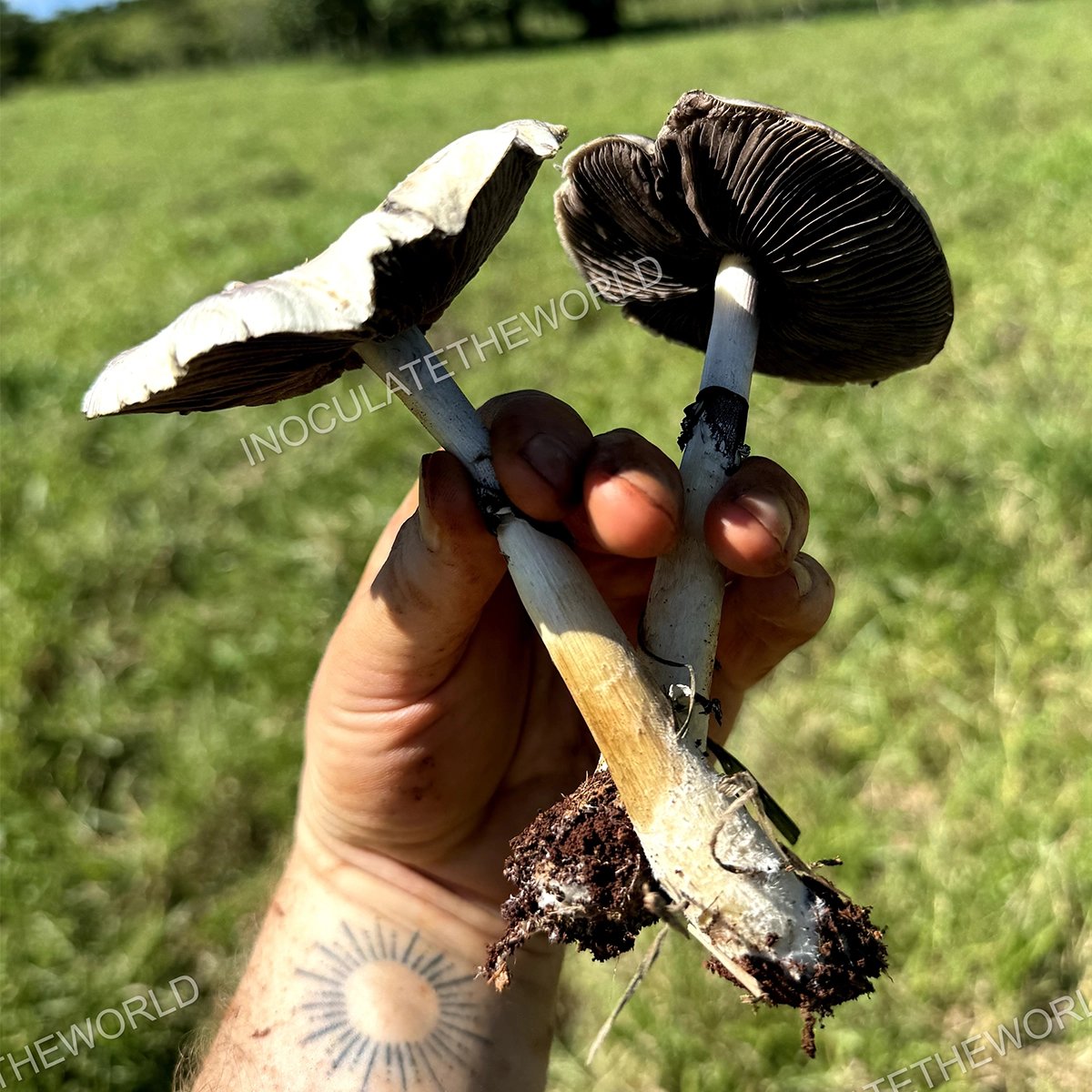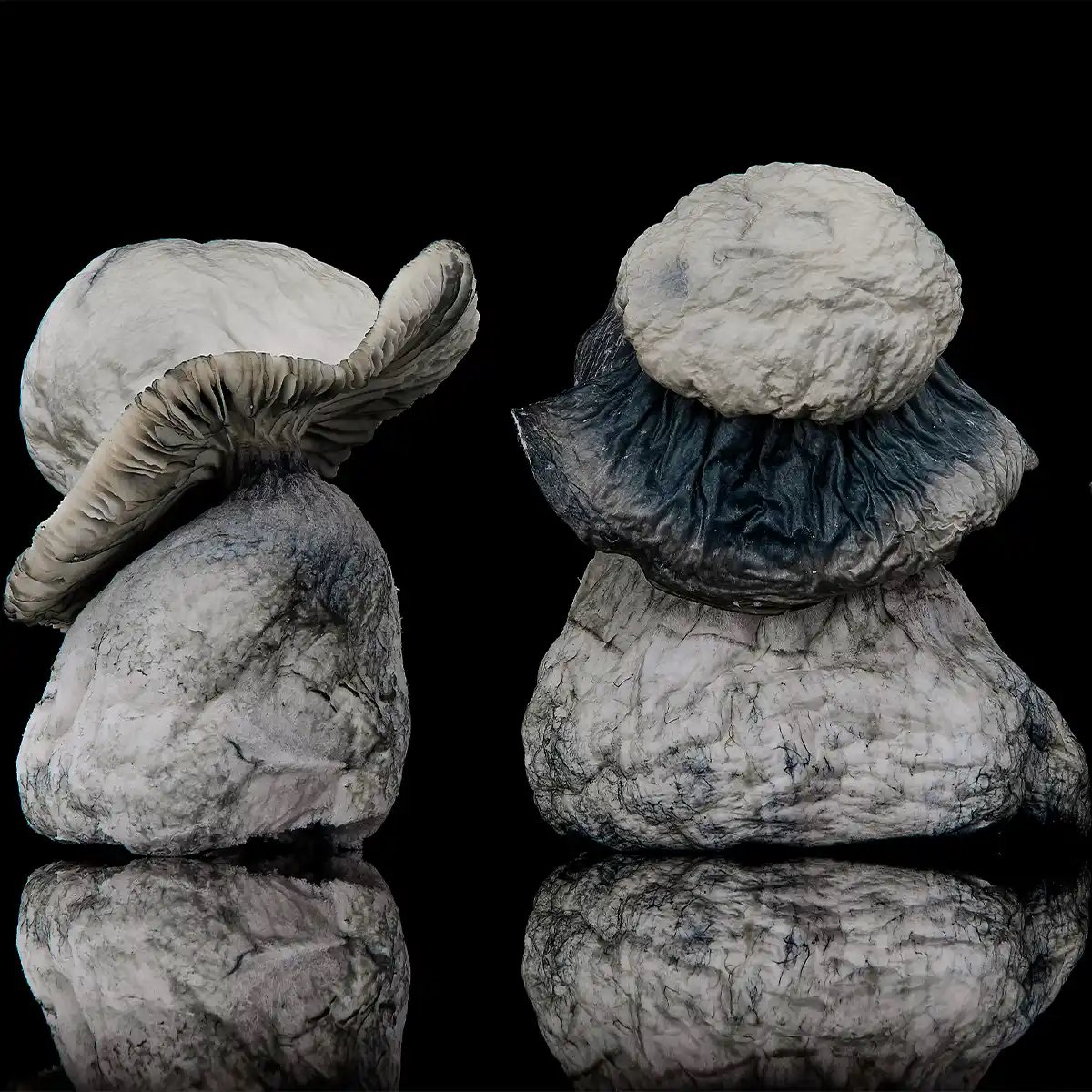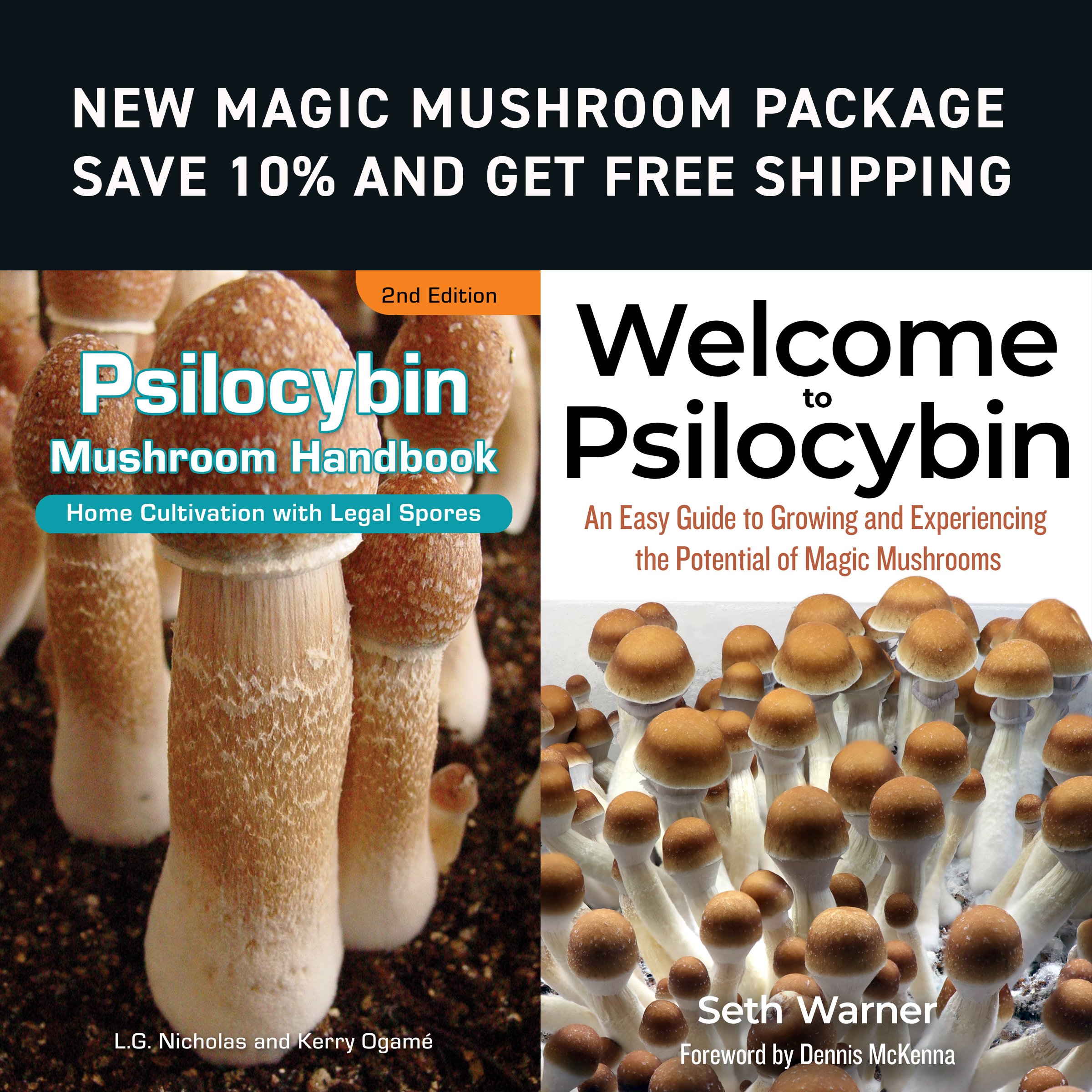Top Ten Mushroom Spores by InoculateTheWorld
We are excited to announce the release of the Psilocybin Mushroom Handbook – 2nd Edition, a must-have book that we are proud to have collaborated on. Our team at Inoculate The World worked closely with the book’s project director Jane Klein to bring this project to life, and we are so excited about the result. This book details everything you need to know about cultivating magic mushrooms, expanding on the classic Psilocybin: A Magic Mushroom Growers Guide, written by O. T. Oss, and O. N. Oeric (pseudonyms used by the McKenna brothers) in 1976. With great appreciation for this original work, and the many ways it has stood the test of time, this new book builds on the foundational ideas presented by the McKenna’s with newer methods as times have changed.
This new book is written for an era in which the legal landscape and cultural attitudes around psychedelics have changed significantly. The mycology community grew substantially as a result of the original book from 1976, which has led to the isolation of far more strains of Psilocybe cubensis. Many mycologists take particular interest in landrace strains as a way to isolate different forms of genetic diversity, which is a focal point of this new volume. To introduce this new book and give our readers a taste of what to expect, we wanted to discuss the origin stories of some of the most fascinating mushroom spores.
Tosohatchee Cubensis
Originally discovered by ITW’s founder, Drew, Tosohatchee Cubensis has quickly become a signature strain for Inoculate The World. In many ways, Tosohatchee looks like a typical cubensis, albeit larger than many other strains found in the wild. What sets it apart is its potency as well as its unique story.
The strain’s discovery was the result of Drew’s specific foraging strategy, which prescribed following the path of cattle egrets in the area to discover mushrooms. Because cubensis mushrooms are part of egrets’ diets, spores are spread through egret droppings, allowing the mushrooms to proliferate wherever egrets are present. The spore prints from this initial find of cubensis mushrooms from the fields of central Florida began the lineage of the Tosohatchee strain we know today, which is also available as an isolated syringe. Since its isolation, mycologists have found Tosohatchee to be one of the strongest cubensis strains around.
Penis Envy (Psilocybe cubensis)
Cultivated specimen of Psilocybe cubensis ‘Penis Envy’—noted for its distinct morphology and elevated psilocybin concentrations under controlled growth conditions
Penis Envy is one of the most well-known cubensis mushroom strains. PE’s unique characteristics, such as its thick stem (and small cap relative to its stem) make it something of a mutant in the mushroom world. With such a small cap, it doesn’t naturally drop many spores, making it challenging to gather spores at all from Penis Envy mushrooms. This also means the strain couldn’t exist and reproduce normally in the wild. Indeed, PE’s unique traits were specifically bred, and couldn’t have come about without human intervention.
PE’s lineage is mostly legend, but over the years, community historians like Hamilton Morris and Mushroom John have summarized its fragmented history. It’s thought that Penis Envy originated from a cubensis mushroom collected by Terrence Mckenna in the Amazon Rainforest. Using a growing medium of manure compost, mycologist Rich Gee took these original genetics and selected for ‘blueing’ to estimate the mushrooms’ psilocin content. Rich Gee states that the PE mushroom “is born of bad genetics” meaning that only a genetically ‘sick’ mushroom can grow with the mutations like PE has. However, it’s these genetic abnormalities that make Penis Envy such a unique and rewarding species to work with.
Fruiting of Psilocybe cubensis ‘Penis Envy’ underway.
Koh Samui (Psilocybe cubensis)
Koh Samui (Psilocybe cubensis)
Koh Samui is named for the island where it was discovered, located in the Gulf of Thailand, east of the Malay Peninsula. It was originally discovered by John Allen, a prominent ethnomycologist, who travelled extensively to discover new species and strains of psilocybin mushrooms.
Fruiting bodies of Koh Samui (Psilocybe cubensis) in domesticated cultivation
Dominican Republic (Dominican Republic Cubensis)
Dominican Republic Cubensis is an ITW original, first discovered in Parque Nacional El Choco in Cabartee on the Northern coast of the Dominican Republic. This strain can grow large, with wide golden caps and thick stems. Because it was discovered only recently in early 2024, it hasn’t gained as much widespread recognition as other more established strains. Still, it’s one of our favorites, and landrace strains like this one always have something unique to offer to genetic research. Our Dominican Republic Cubensis Spore Syringe or Spore Print are the best ways to research the unique phenotypes of this strain
Dominican Republic Cubensis domesticated.
APE (Albino Penis Envy)
Albino Penis Envy, also known as APE, is the result of meticulous genetic work by John Workman. When Workman found spores from some PF Albino mushrooms, he crossed these genetics with Penis Envy, and selectively bred the results for many generations until it became the APE we all know and love today. Because it’s an albino strain, APE produces clear spores, but these genetics are still available in a spore swab. APE is extremely popular for its unique blue-grey color, thick stem, and remarkable size.
Golden Teacher
Another one of the most famous magic mushroom strains is Golden Teacher. This beloved strain can be a lighter golden-brown compared to the more common brown cubensis color. Its origins are a subject of debate, and some people say it was first named and discovered by Steven Pollock in the 1980s, and originates from the Gulf Coast region of Florida. Others say it was originally found growing out of a pile of straw and dung in Georgia. With so much conflicting lore circulating, it’s hard to pinpoint Golden Teacher’s exact history, but we do know that it has been a favorite in the mycology community since its discovery. We offer these genetics in spore print form, and as an isolated syringe in addition to the regular Golden Teacher Spore Syringe.
If you want to see what’s next, you’ll have to order Psilocybin Mushroom Handbook. You’ll learn even more about the psilocybin mushroom strains, as well as gain useful knowledge of the mushroom life cycle and tips for growing.













